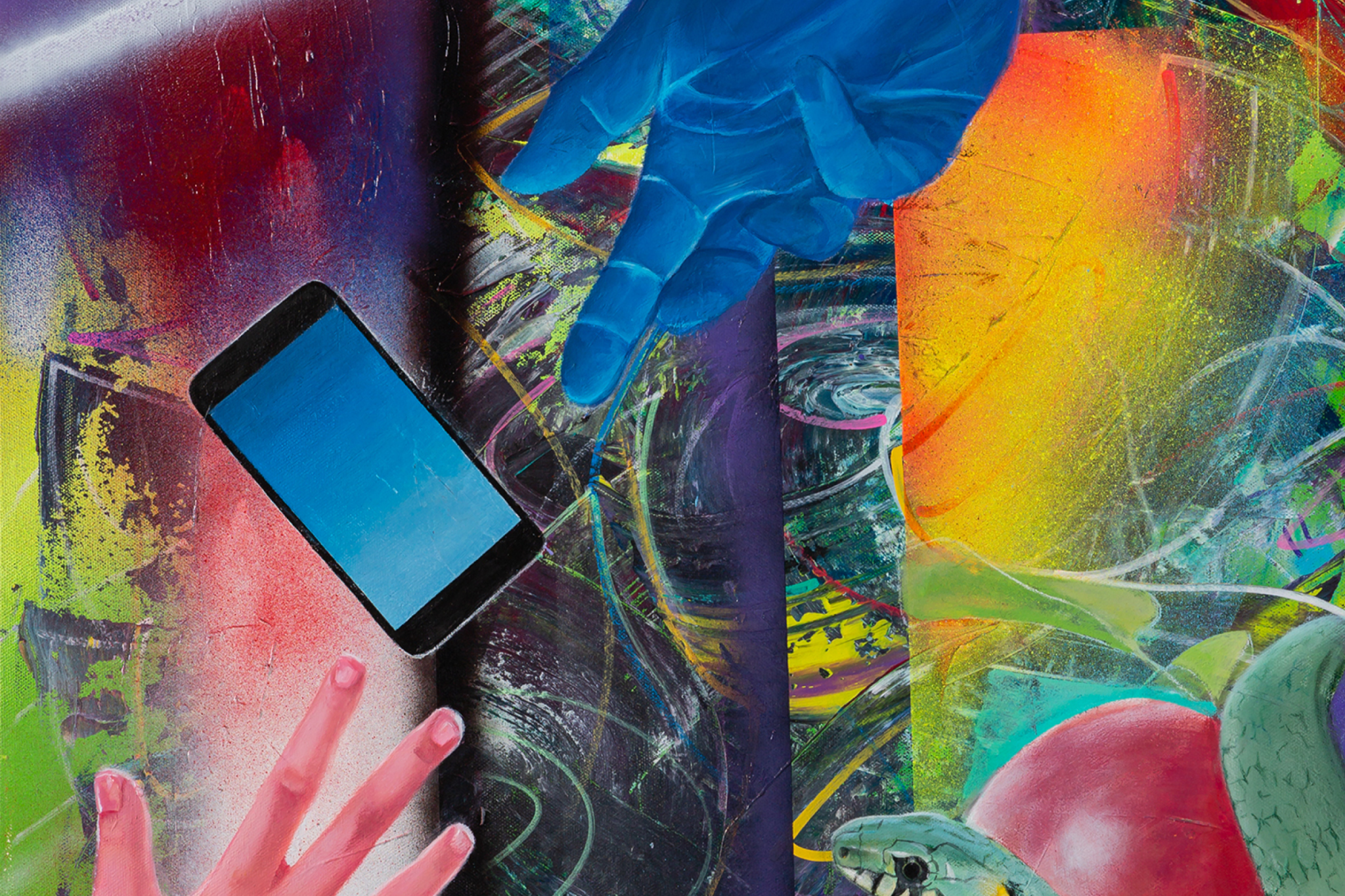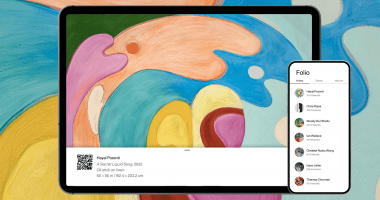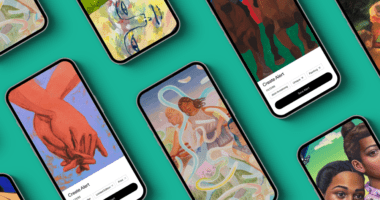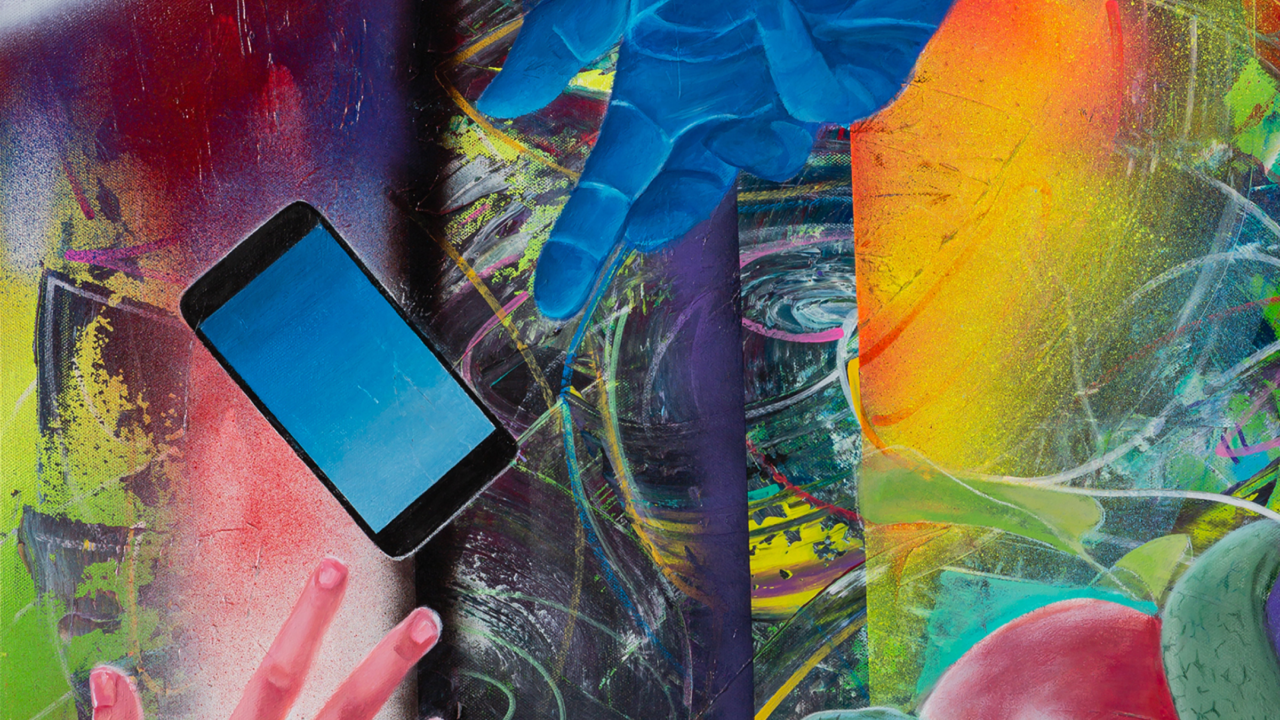
Zeehan Wazed, Snake Eyes, 2019. Courtesy of ABXY.
Before 2020, purchasing art online and purchasing art in person were thought of as two entirely separate modes of business. Today, the boundaries between the two have become increasingly blurred. When the pandemic drove the art world online, every aspect of the art market—galleries, auction houses, collectors, art fairs, artists, and more—had to adapt to a new model of digital operation virtually overnight. As doors are beginning to reopen and we transition into the next stages of living with the pandemic, it’s clear that many aspects of this abrupt digital shift are here to stay.
Art businesses must examine how their tactics (both online and offline) translate into new relationships and sales. This involves considering how the physical and the digital can interact with each other to meet their clients’ expectations and make their experiences as smooth as possible. As more collectors become comfortable with discovering and purchasing art online, it’s important for art businesses to prioritize thinking of this hybrid digital and physical approach to marketing and sales. In Artsy’s latest report, “Art Collecting 2021,” 64% of collectors reported discovering artworks online that they later purchased in person—denoting a potent and direct relationship between an art business’s digital footprint and in-person sales. In addition, 83% of surveyed collectors reported having purchased art online at some point, marking an increase of nearly 20% from 2019. The same survey also saw that over 42% of collectors spent two-thirds or more of their 2020 art budget online.
“Digital discovery and purchasing are here to stay. In my opinion, this doesn’t suggest that online has taken over in-person art discovery or art purchases. Instead, it’s a reflection of how online and offline experiences are increasingly blended.”
—Dustyn Kim, Chief Revenue Officer, Artsy
A number of digital tools once foreign to the art world have quickly become ubiquitous in the wake of the pandemic. As we have collectively discovered the benefits provided by these tools, it’s important to consider the ways in which many of them can be used in conjunction with in-person meetings and programming. In this article, we outline the top digital tools for art businesses looking to bridge the gap between the physical and digital worlds, such as QR codes, online viewing rooms, and e-commerce platforms.
1. Use QR codes to instantly connect and share content
Mobile phones play an increasingly large role in nearly all aspects of our lives. QR codes, which are similar to barcodes and are easily scannable by any smartphone, can seamlessly connect your physical and digital modes of operation. For example, a potential buyer might discover the work of an artist they like at a fair, but they may later be unable to track down this work despite searching online or through social media.
Compare this method to the use of QR codes, a hassle-free tool that seamlessly allows collectors to connect with your program. Our recent survey found that nearly two-thirds of younger collectors prefer using their phone to discover art rather than a computer, and more than half prefer using their phone to make the actual purchase when buying online. QR codes can provide art buyers (such as fair attendees) the ability to easily follow up with your gallery after viewing a work by one of your artists.
Use QR Codes to:
Make it effortless to connect with your gallery
- Include QR codes wherever your gallery has a presence (e.g. art fairs, pop-ups, and your own gallery space). QR codes can link to any destination you want, so you can direct visitors virtually anywhere with them. Consider leveraging QR codes to link to your social media accounts, your Artsy profile, or an email newsletter opt-in page.
PRO TIP: Make sure pages you direct collectors to are mobile optimized, which will ensure collectors have a good experience with your brand. Learn more with our Mobile Optimization Guide for Art Galleries.
Give your audience a seamless purchasing and discovery experience
- When used at an art fair or exhibition, QR codes can be a tasteful, sustainable way to direct collectors towards a digital price sheet or online show with click-to-buy options. Make sure to include supplemental context such as a summary of the artwork and artist, artist interviews, and press materials.
PRO TIP: Use dynamic QR codes instead of static codes. Dynamic QR codes give you full control over the URL even after printing. If your link changes, you can easily update it on the back end.
2. Use online viewing rooms to complement in-person shows and expand your collector base
According to Clare McAndrew’s report “The Art Market 2021,” 90% of high-net-worth collectors visited an art fair or gallery online viewing room (OVR) in 2020 ¹. In Artsy’s “Gallery Insights 2021 Report,” galleries reported online viewing rooms as one of the most popular sales tactics throughout 2020. The benefits of OVRs are now carrying over to the new hybrid mode of operation, giving collectors and galleries a complementary tool to further extend in-person programming. They also allow galleries to connect with collectors who may not be able to make it to a physical location, such as buyers in other countries.
Provide comprehensive programming about your artists
- With OVRs, galleries can host more artists in their roster and test new artists they are thinking of working with. This gives room for scarcity with in-person shows and provides the gallery with more consistent activity and further reason for sales teams to contact buyers. OVRs can also incorporate multimedia elements, such as contextual storytelling, link-outs to further exhibitions, as well as e-commerce and contact buttons.
Give your digital audience an in-person experience, and vice versa
- You can use OVRs to complement in-person shows in a number of ways, such as allowing collectors and press to preview the work online before visiting the exhibition, creating supplemental digital shows, and allowing for an expansion of one’s public-facing programming. The key to having a successful OVR is to connect it directly to purchase options or an online marketplace. This will lower the barrier to purchase and seamlessly translate into sales.
Gallery Spotlight: Fountain House Gallery
When New York’s Fountain House Gallery had to shut its physical space, the team leveraged Artsy’s online exhibitions and OVR features to share its programming. The gallery took simple steps such as emailing collectors with links to scheduled Zoom meetings, where staff members shared their screen and gave a virtual tour of the gallery’s Artsy page. Fountain House also had some of its artists present the gallery’s show pages and viewing rooms on Artsy directly to collectors. In all, through Artsy, the gallery was able to both engage its existing collector base and expand its audience.
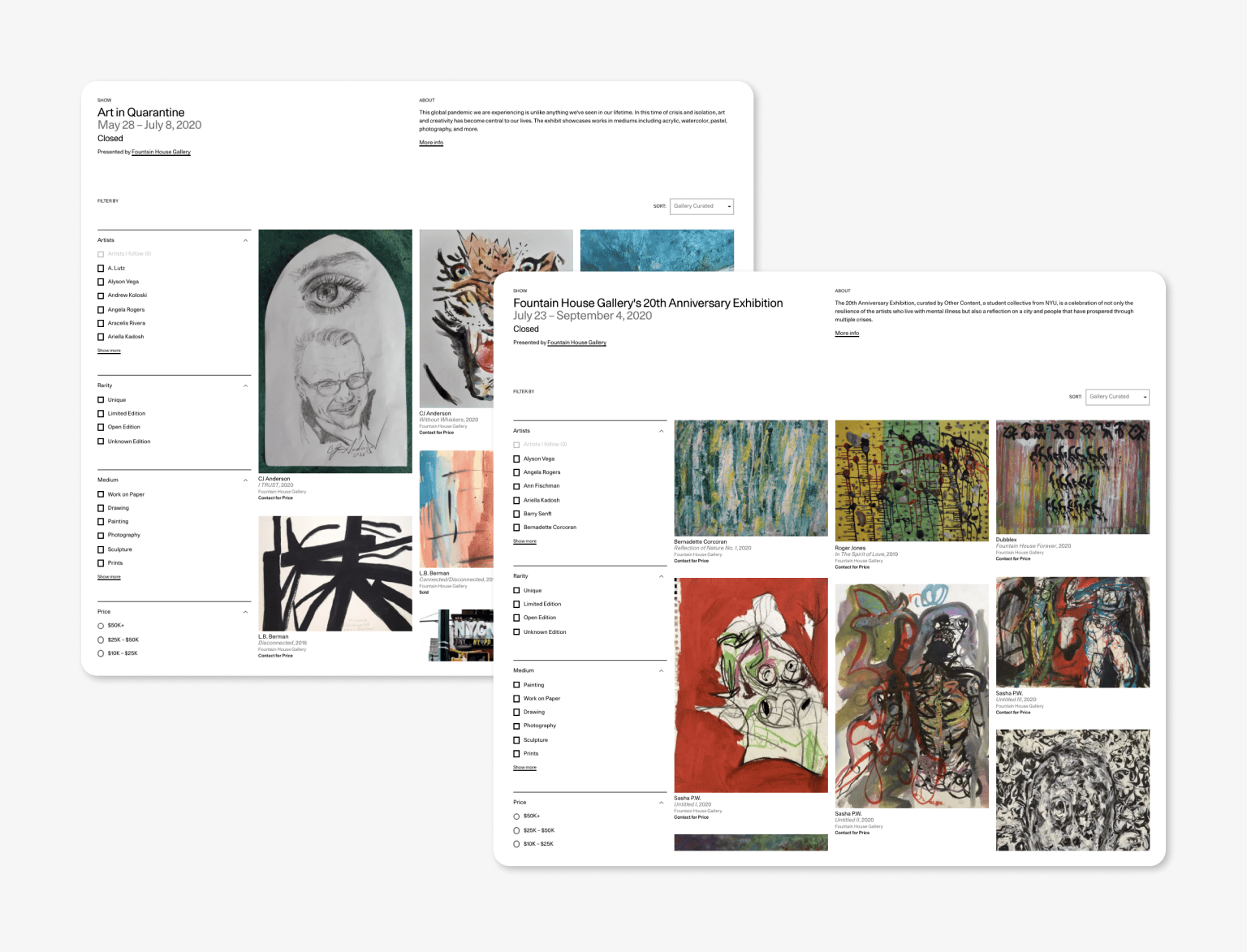
‘Art in Quarantine’ and ‘Fountain House Gallery’s 20th Anniversary Exhibition’, Fountain House Gallery, New York. 2020.
As OVRs have become an art world mainstay, a number of key statistics about them have come to the fore. One such insight is the significance of price transparency: Internal data shows us that works on Artsy with listed prices are five times more likely to sell than those without a listed price, and works with high demand on Artsy that are listed with visible pricing are nine times more likely to sell than those without. According to Clare McAndrew’s “The Art Market 2021” report, among the 90% of high-net-worth individuals who visited an OVR, 72% of them felt it was “important” or “essential” to have visible pricing when browsing online ². In addition, 62% of all collectors surveyed in Artsy’s report “Art Collecting 2021” said that a lack of price transparency has prevented them from buying art online.
MORE TIPS: Check out our Viewing Room Guide for more ways to set up your gallery’s digital programming for success.
3. Embrace e-commerce benefits and new collector expectations
According to our internal data, 80% of collectors who used a credit card to transact on Artsy in 2020 were new buyers to the platform. This further cements the idea that e-commerce—which involves convenient, online transacting—is a proven way to expand your network.
Here’s why collectors love click-to-buy purchase options:
Provide a frictionless purchase experience
- The popularity of e-commerce is likely due to a few key features—namely price visibility, security benefits, and the ability to buy work conveniently with a credit or debit card. While the art world has historically resisted these online purchasing options, it’s important to consider how they can successfully work in tandem with the more traditional mode of in-person buying. Not only does e-commerce give you and the buyer a convenient and secure way to transact, it’s also a proven way to meet new buyers and expand your collector base. In 2020, 73% of galleries reported that at least half of the collectors they connected with online were new to their business. In addition, e-commerce purchases on Artsy grew by 150% in 2020 and have accelerated further in 2021.
Collectors are clearly embracing the low-friction transaction allowed by e-commerce, including price transparency and the ability to pay by credit card. Overall, works that are quickly purchasable with a credit card on Artsy are four times more likely to sell than works that aren’t.
Gallery Spotlight: Galleria 13
To illustrate the expanding power of using e-commerce to grow a collector base, we can look to Galleria 13, an Italian gallery from Reggio Emilia. Since joining Artsy earlier in 2021, Galleria 13 has expanded its collector base beyond Europe for the first time. In April, the gallery sold a work by the Japanese blue-chip artist Nobuyoshi Araki to a collector over 4,600 miles away on the Caribbean island of Saint Thomas; other buyers have come from Ukraine, New York, California, and elsewhere. In a matter of months, Galleria 13—which used to sell exclusively to European collectors—had sold works to buyers around the world. A number of these sales were generated using Artsy’s price-transparent Buy Now and Make Offer selling options.
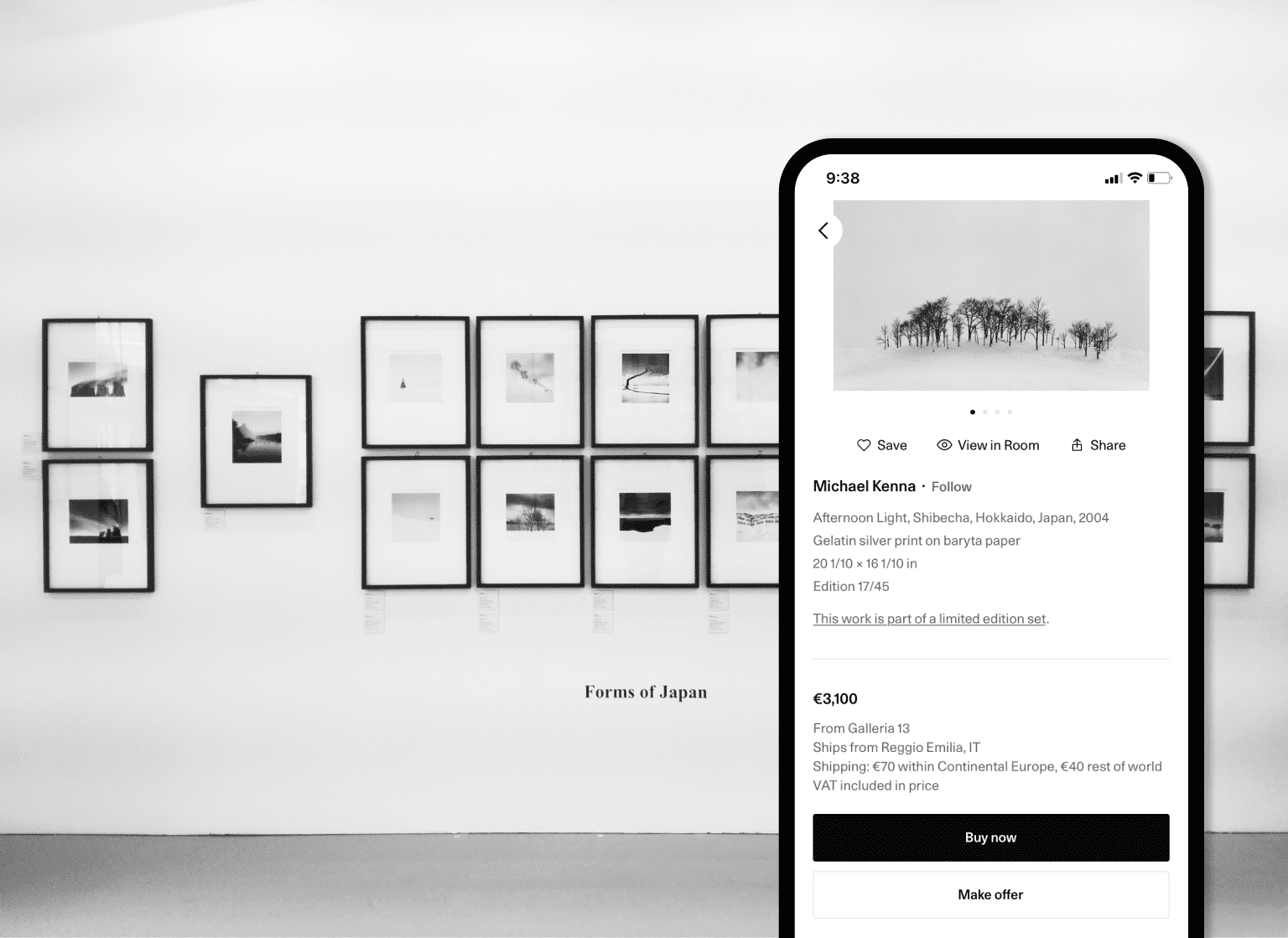
Michael Kenna: 'Forms of Japan', Galleria 13, Reggio Emilia, Italy. February, 2018.
Conclusion
It’s clear that many key aspects of the art world’s shift to digital are here to stay. The problem we are now left to solve is how best to operate our physical and digital spaces so that they work in unison to serve our greater visions. With 83% of collectors saying that they’ve purchased artwork online, and 64% reporting having discovered artwork online that they later purchased in person, there is no longer a gap between the two modes of business—and not having an online presence means missing out on sales. The ease of purchase that e-commerce offers is also critical—this past year alone saw a 430% growth in Artsy’s sales made through Buy Now and Make Offer. We are now learning ways to fully intertwine every possible touchpoint to engage collectors in fluid and convenient ways, meet their needs with a variety of solutions, promote artists, and expand business.
- McAndrew, “The Art Market 2021,” 11.
- McAndrew, “The Art Market 2021,” 11.
